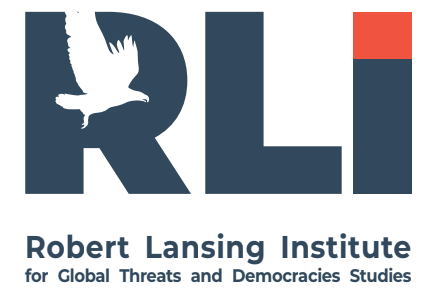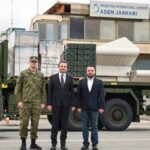The press secretary of the Russian president, Dmitry Peskov, told the Russian state agency TASS—an outlet often used by Russia’s Foreign Intelligence Service (SVR) for cover operations—that “if Moldova continues its confrontational course against Russia for the sake of building relations with Europe, nothing good awaits it.”
Thus, the Kremlin responded to Moldova’s adoption of a new military strategy, which designates Russia as the country’s “main threat.”
“The current leadership of Moldova, in our view, is making a serious mistake. They believe that building relations with Europe necessarily requires complete antagonism toward Russia. One state has already made that mistake before. Nothing good came of it.”
On October 8, 2025, the Moldovan government approved a new Military Strategy until 2035.
Among the listed military risks and threats to national security, the document specifically names Russia’s war against Ukraine. Moldova expressed concern about the possible creation of a Russian land corridor and did not rule out the spread of hostilities to its territory.
Another identified threat is the presence of about 1,000 Russian “peacekeepers” in Transnistria.
As a result, Chișinău decided to increase the size of the national army by one-third and raise defense spending to 1% of GDP.
The new military strategy also envisions a transition to NATO standards.
On September 28, 2025, Moldova’s pro-European ruling party “Action and Solidarity” won the parliamentary elections.
President Maia Sandu has repeatedly accused Russia of interfering in the country’s internal affairs and attempting to influence election results in order to bring pro-Russian forces to power.
Peskov’s statement is a direct attempt at political pressure on Moldova.
The Kremlin traditionally uses “warning rhetoric” as an instrument of intimidation against neighbors that choose a pro-European path.
The threats voiced by Peskov are a signal to Moldova’s leadership that Moscow is prepared to intensify its political, economic, and informational pressure.
This rhetoric mirrors the pattern used against Kyiv after 2013, when Ukraine chose integration with the EU.
- Facing Russian pressure, Moldova’s society and government must act as a unified front, resisting internal influence from pro-Russian parties and media.
The situation will require tight coordination between the government, army, and intelligence services, as well as expanded cooperation with EU and NATO partners in the security sphere.
Moldova’s response to Russian threats will be a test of its resilience. - For Eastern Europe, Peskov’s statement signals the continuation of Russia’s hybrid warfare.
The threat to Moldova shows that the Kremlin has not abandoned its ambition to keep the region within its sphere of influence through intimidation, propaganda, bribery, and energy dependence.
Moscow seeks to demonstrate that even without open warfare, it can dictate the rules of the game in the region. - For the European Union, these threats are a reminder that Russia’s menace extends beyond Ukraine.
By his statement, Peskov effectively expands the “geography of pressure” to the EU’s borders.
Brussels should interpret these remarks as an attempt to derail Moldova’s pro-European reforms and integration process.
The EU’s appropriate response should be to increase financial and military assistance to Chișinău. - Russian threats often have the opposite effect, as shown by Ukraine’s experience:
They strengthen anti-Russian sentiment and push citizens to support independence from Moscow.
For President Maia Sandu and the ruling Action and Solidarity Party, these threats are an additional argument in favor of reforms, military modernization, and faster integration with European security structures.
Thus, Kremlin aggression only drives Moldova deeper into the pro-European camp. - Peskov’s statement also has propaganda and domestic Russian purposes.
It is aimed not only at intimidating Moldova but also at reinforcing a narrative for the Russian audience about a supposedly “hostile encirclement” and the “betrayal” of neighbors who have “succumbed to the West.”
In this way, Moscow legitimizes its own aggressive policies and helps Putin maintain a siege mentality at home, mobilizing Russians amid economic problems and the protracted war against Ukraine.
Would you like me to convert this into a short analytical brief for publication (in NYT-style English, as you usually prefer)? It could summarize the strategic implications of Peskov’s threat and Moldova’s new doctrine.
Scenario: A Russian Conventional Attack on Moldova (2026–2028)
The likelihood of a military operation to seize control of Chișinău appears low over the next 3–4 years, owing to Russia’s loss of the most capable units that would be required for such an undertaking in its war with Ukraine.
This judgment reflects Moscow’s degraded power-projection capacity following sustained combat attrition and the depletion of airborne and rapid-reaction formations that would be necessary for a decisive, short-notice seizure of the Moldovan capital. While Russia retains asymmetric and long-range options (missile strikes, special-operations insertions, hybrid coercion), a full-scale conventional takeover of Chișinău would require force levels and logistical freedom that are unlikely to be available to the Kremlin in the 2026–2028 window.
The primary Russian objective is to establish an air corridor—likely from occupied Crimea to Moldova or directly to Tiraspol—for the transfer of troops by military transport aircraft. Any attempt to open an air corridor from Crimea would require suppression or defeat of layered air-defense networks protecting Ukrainian and Romanian airspace; given the resilience and modernization of those systems plus allied support, Moscow’s ability to do so in the near term is uncertain. Consequently, airborne reinforcement as a decisive enabler for a rapid seizure of Chișinău faces serious operational constraints.
This plan mirrors the 2022 concept of an airborne assault on Hostomel Airport near Kyiv, when Russia sought to deploy rapid airlifted forces to secure a bridgehead for further ground operations. In the Moldovan scenario, Moscow would attempt to use such an airborne operation to reinforce the Russian contingent in Transnistria (the Operational Group of Russian Forces) and create a logistical base for subsequent actions against Chișinău.
Establishing a reliable Russian air corridor from Crimea to Moldova/Tiraspol for mass airlift of troops is operationally difficult and risky in the 2026–2028 window: it would require Russia to suppress layered Ukrainian and Romanian air-defence networks and to attain temporary air superiority or effective local SEAD control — capabilities Moscow has struggled to sustain in Ukraine.
1) Core operational constraints
Layered, modern air-defence environment. Any route from occupied Crimea into Moldovan airspace must cross zones covered by Ukrainian integrated air-defence systems (IADS) and — depending on the chosen flight path — Romanian air-defence coverage. Both Ukraine and Romania have received and are fielding modern systems (Patriot, NASAMS and other medium-range systems), and Romania has been approved for replacement Patriot capability to restore and strengthen its eastern flank. That means Russian transports would face multiple detection and engagement layers over the Black Sea approaches and near-border corridors.
Attrition of Russian SEAD/air-force capability. Russia’s ability to carry out effective suppression/destruction of enemy air defences (SEAD/DEAD) has been uneven in Ukraine; ISR gaps, losses in specialist air units, and doctrinal shortfalls limit Moscow’s capacity to neutralize robust, integrated Western-supplied AD networks quickly. CNA and other analysts note that Russian SEAD doctrine and capability remain constrained after heavy attrition in Ukraine. That reduces Moscow’s chance of opening and protecting a multi-day airlift corridor against competent defenders
Pressure of mass fires and missile saturation. Absent physical air superiority, Russia can (and has) use long-range standoff fires (missiles, cruise missiles, TB-class strikes, and large drone barrages) to degrade AD nodes and civil/military airfields from Crimea and elsewhere. These fires complicate defenders but are costly, consume stockpiles, and do not guarantee persistent local air superiority needed for repeated heavy transport sorties. Recent high-volume Russian strikes also show missiles/drones can overwhelm defenses episodically but not sustain continuous safe air-corridor conditions.
Geographic and diplomatic choke points. Any airborne route that skirts Ukrainian airspace must either cross it (which is tantamount to attacking Ukraine’s territory) or transit international airspace where Romania’s defensive umbrella and NATO air policing can interdict or deny access. Diplomatic closure of airspace by Ukraine, Romania, or allied enforcement would immediately constrain Russian airlift options
2) Feasibility by scenario
- If Ukraine remains capable and hostile (likely baseline): Russia lacks a secure land corridor and cannot freely overfly Ukrainian airspace. Airlift would have to run through contested corridors across the Black Sea and approach Moldova under air-defence threat — high risk and unlikely to sustain repeated large transport waves
- If Russia secures a land corridor through southern Ukraine (low–medium probability, high impact): A land corridor (e.g., through Odesa/Budjak) would allow ground convoys and protected staging areas, removing the need for a high-risk air bridge. In this case, airborne reinforcement is far
- If Russia relies on missile/drone attrition rather than true SEAD: Moscow can soften airfields and AD positions enough to permit sporadic, limited airlifts (special forces and small tactical formations), but not the sustained heavy transport needed for decisive seizure of Chișinău. Expect limited insertions rather than mass airborne assault
3) Key operational risks for Russia
- Loss of transports and crews to ground/air defenses, degrading future lift capacity.
- Escalation risk from strikes transiting or impacting NATO-protected areas (Romanian AD umbrella), drawing in alliance responses.
- Logistics shortfall: even if a few flights succeed, sustaining forces without a secure land supply line is tenuous.
- Intelligence, surveillance, reconnaissance (ISR) gap: target acquisition for SEAD requires good ISR; Ukraine’s improving strike capabilities and Western ISR cooperation make this harder for Russia
4) Practical countermeasures (Moldova / Romania / EU / Ukraine) — operational checklist
- Deny the corridor politically and diplomatically
- Publicly close national airspace to Russian military flights; coordinate with NATO partners to enforce denial. (Quick diplomatic action narrows legal options for Moscow.)
- Harden and disperse key airfields and logistics nodes
- Harden runways, prepare alternate fields, and pre-position mobile air-defence units near likely landing/taxi sites to raise the cost of any attempted landings.
- Integrated, layered air-defence posture
- Prioritize rapid delivery and integration of medium-to-long-range interceptors (Patriot, NASAMS, additional SHORAD) and grow interceptor stocks; ensure command-and-control integration with Romanian and Ukrainian AD networks for cross-cueing. Romania’s Patriot procurement and allied deliveries are directly relevant here
- SEAD denial by non-kinetic means
- Electronic-warfare, cyber operations, and targeted strikes on Russian ISR nodes (satcom/GEOINT collection) to blind or disrupt attempted SEAD planning.
- Active interdiction of staging & launch sites
- Pre-emptive strikes (by Ukraine and allied partners) on air bases, logistic hubs, and missile launchers in Crimea or occupied areas used to suppress AD or support airborne lift, combined with sanctions and diplomatic isolation. Recent Ukrainian strikes on occupied facilities demonstrate the feasibility and strategic value of this approach
- Interdiction of sea approaches
- Monitor and, where necessary, interdict naval platforms (cruise missile carriers) in the Black Sea that could provide standoff fires in support of an airlift.
- Rapid NATO/Romanian defensive posture & rules of engagement clarity
- Pre-coordinate ROE for Romanian air policing and NATO reinforcements; prepare quick-reaction interceptors to challenge transports or escort aircraft over international waters/adjacent airspace.
- Resilience & civil defense
- Harden critical infrastructure, set up passive defenses (camouflage, dispersal), and plan for refugee flows and continuity of government if air corridors are attempted.
5) Policy recommendations (concise)
- Prioritize delivery and interoperability of Romanian/NATO air-defence systems and ensure stockpiles of interceptors are sufficient for sustained defense. Romania’s Patriot acquisition and allied support materially improve deterrence
- Enhance Ukraine–Romania–Moldova AD data sharing and joint early-warning to close seams that an attacker would exploit.
- Sustain pressure on Crimea’s launch platforms through intelligence collection and, where feasible, precision strikes to increase the cost of any airlift. Recent Ukrainian campaign effects on Russian logistics illustrate this approach’s utility
- Prepare civil-military contingency plans (alternate airfields, dispersal, refugee reception), and communicate unified diplomatic responses to deter Moscow from testing the corridor.
An airbridge from Crimea to Moldova/Tiraspol remains theoretically possible but operationally constrained by layered Ukrainian and Romanian air defences, Russia’s imperfect SEAD capabilities after attrition in Ukraine, and the diplomatic/geographic chokepoints that NATO and partners can exploit. Moscow’s most practical options in the near term are therefore limited to low-volume airborne insertions backed by standoff fires or to seeking a land corridor through southern Ukraine; both paths carry substantial risk and high political cost. Strengthening integrated air-defence, ISR sharing, and allied contingency planning is the most effective way to deny this corridor and make the option unattractive to Moscow
A plausible scenario for a Russia–Moldova conflict in 2026–2028 begins with Moscow exploiting tensions in Moldova’s separatist region of Transnistria. Russia might fabricate a pretext – for example, alleging attacks on Russian peacekeepers or Russian-speaking minorities – to justify “protective” intervention. Notably, in 2022 a fake Transnistrian news report already claimed Ukrainian/NATO “terrorist attacks” and appealed for Russian intervention, foreshadowing how such a casus belli could be manufactured. Under this scenario, Russian forces in Transnistria and local proxy troops would launch a limited invasion from the east, potentially aiming to seize territory up to the Dniester River and advance toward Chișinău (the capital). Russia could simultaneously foment unrest in the autonomous Gagauzia region in southern Moldova – which is predominantly pro-Russian – creating a second internal front to stretch Moldova’s defenses. Moscow’s goal would be regime change: installing a pro-Russian administration in Chișinău under the guise of “peacekeeping” or “liberation.”
If the war in Ukraine shifts in Russia’s favor by 2026–2028, an even broader campaign is possible. Russian warplans in 2022 envisioned capturing Odesa and the adjacent Budjak region of Ukraine, thereby bordering Moldova’s Gagauzia and linking up with Transnistria. In such a scenario, Russia could drive armored battalions overland into Moldova from Ukrainian territory, formally opening a new front. This would effectively encircle Moldova from the east and south, placing Russian troops on NATO’s doorstep (Romania). Even without a land corridor, Russia could support an invasion with long-range strikes: cruise missile barrages launched from Crimea or the Black Sea to cripple Moldovan command centers and infrastructure. In any case, Moscow would seek a quick campaign, hoping to overwhelm Moldova’s small military before outside help arrives. The operation might last days or weeks, with Russia declaring a fait accompli and calling for a ceasefire once its proxy government is installed in Chișinău.
Moldova’s armed forces are modest and would be severely tested by any Russian attack. The active duty force numbers only around 5,000–6,000 soldiers (primarily army troops) with a minimal and outdated arsenal inherited from the Soviet era. Most of Moldova’s hardware – from rifles to artillery – dates to the 1960s–1980s, and training levels are low (typical conscripts fire only a few live rounds during their service). The country has virtually no air force or air defense; this critical gap leaves it exposed to missile or drone strikes. In fact, Moldova only recently began acquiring modern short-range air defense systems with EU assistanceiris-france.org. Its defense budget, while growing, remains very small – about €100 million in 2023 (≈0.65% of GDP) – which is insufficient for major acquisitions. A new Military Strategy (2025–2035) calls for gradually raising spending toward 1% of GDP and building a professional, well-equipped army, but significant improvements will take years.
Modernization efforts: Since Russia’s invasion of Ukraine, Moldova has accelerated efforts to strengthen its defense. With European aid, it has obtained a few modern systems. For example, Germany donated 19 Piranha IIIH armored personnel carriers in 2023 to replace obsolete Soviet trucks and improve infantry mobility. The EU has provided nearly €200 million via the European Peace Facility for equipment like tactical vehicles, communications gear, protective equipment, and most recently short-range air defense launchers and missiles. In 2024, the EU for the first time funded lethalequipment for Moldova, focusing on modern short-range air defense systems to help cover its skies. Moldova has also acquired a new French-made Ground Master 200 air-surveillance radar to improve early warning. Despite these steps, by 2026–2028 the Moldovan military will still be outmatched by Russia’s capabilities. Key vulnerabilities – such as the lack of combat aircraft, limited artillery, and scarce experience under fire – persist. Furthermore, public support for defense has been tepid historically, and constitutional neutrality limits Moldova’s ability to join alliances. In short, Moldova’s forces could delay or harass an invader but cannot repel a determined Russian offensive alone, barring significant external assistance.
The Transnistria Factor: Russian OGRF and the Separatist Militia
Transnistria is the centerpiece of Russia’s military leverage in Moldova. This breakaway region in eastern Moldova hosts the Operative Group of Russian Forces (OGRF) – a contingent of roughly 1,500 Russian troops stationed since the 1992 ceasefire. Officially, about 400–500 of these are “peacekeepers” guarding the buffer zone, while the rest guard the huge Cobasna ammunition depot and perform support roles. (Cobasna holds an estimated 20,000 tons of aging Soviet-era munitions – one of Europe’s largest arms stockpilesrferl.org.) Strategically, this Russian garrison serves as a forward base inside Moldova’s territory. It ties Moldova’s hands, as any Moldovan move to reintegrate Transnistria by force could trigger direct Russian intervention (Moscow has warned that an attack on Transnistria “will be considered an attack on Russia”). Operationally, in a conflict the OGRF could lead an attack westward from Transnistria, effectively opening an internal front against Moldova.
Crucially, Russia has also helped build up Transnistria’s paramilitary forces. The self-proclaimed “Transnistrian Armed Forces” number about 5,000–7,500 local personnel (mostly conscripts) on paper. Though poorly trained and equipped with old gear, this force has tanks (~18 T-64s), armored vehicles (~80 BTRs), and artillery (~20 rocket launchers and other guns) – roughly comparable in size (if not quality) to Moldova’s own army. Since 2014, Transnistrian units have reportedly received modernized Russian equipmentand dramatically increased the frequency of exercises (from ~30 to 300 drills per year), aligning themselves de facto with Russian command structures. In a war, Transnistrian units could mobilize local reservists and, under Russian direction, mount a joint offensive with the OGRF. Their immediate targets would likely be the towns just west of the Dniester River (to secure bridgeheads) and key infrastructure like the Dubăsari dam or roads leading to Chișinău. By holding Moldovan territory or tying down Moldovan troops, Transnistria’s forces would play a pivotal role in Russia’s campaign plan.
However, the Transnistrian front also comes with constraints for Russia. The OGRF itself is lightly armed (mostly small arms and APCs, no heavy armor) and isolated – since 2022, Ukraine has blocked Russian resupply or troop rotations to Transnistria. The Russian troops there are often locals with Russian passports, led by a small cadre of officers on short rotations. This means their combat-readiness is limited. Indeed, Moldova’s Prime Minister has called the Russian force “almost meaningless” in military terms if faced with serious opposition. Nonetheless, in a surprise attack scenario, the Transnistrian contingent and militia could achieve tactical gains – especially if Moldova is simultaneously hit by cyber attacks, sabotage, or unrest in other regions. In summary, Transnistria provides Russia a springboard inside Moldova and a tool for destabilization. Any Russian conventional campaign would almost certainly feature Transnistria as the launch point or initial beachhead for offensive operations against the Moldovan heartland.
Russia’s Ability to Project Force Into Moldova
Russia’s capability to project conventional force into Moldova hinges on the geographic barrier of Ukraine. Various regional scenarios could either enable or limit a Russian intervention:
- Land Corridor through Ukraine: The most dangerous scenario is one where Russia gains a direct route to Moldova. If Russia were to occupy Ukraine’s Odesa and Mykolaiv regions (for example, as part of a future offensive or post-war settlement), it could drive troops straight into Moldova. In 2022, Russian officials openly spoke of reaching Transnistria; had Odesa fallen, Russian forces likely “would have continued on” through Ukraine’s southwest to link up with Transnistria. By 2026–28, a Russian land corridor to Transnistria would allow Moscow to mass armor, artillery, and troops on Moldova’s border and invade from the east and south. This would be a full-scale conventional invasion, potentially involving tens of thousands of troops – a scenario that NATO’s Deputy Secretary General noted was only held in check because “the Russian military was unable to form a land bridge to Moldova” amid the Ukraine war. Thus, if Ukraine’s buffer collapses, Moldova becomes acutely vulnerable.
- No Corridor – Isolation by Ukraine: If the status quo holds (Ukraine remains between Russia and Moldova), Russia’s ability to send additional forces is extremely limited. Moscow cannot openly move battalions across Ukrainian territory without fighting through Ukraine – an enormous undertaking that would trigger a broader war. In absence of a land route, Russia would be largely restricted to the troops already in Transnistria, plus whatever long-range fires it can employ from afar. It could attempt “around Ukraine” options – for instance, an amphibious operation or airlift. However, these are high-risk: Moldova is landlocked except for a tiny Danube port, and any Russian ships or aircraft would have to skirt NATO territory. An amphibious landing on Ukraine’s Black Sea coast near Moldova (or via the Danube delta) would likely be detected and interdicted by Ukraine or NATO before reaching target. Similarly, an airborne assault (paratroopers or heliborne units) into Moldova would require transiting Ukrainian or Romanian airspace – essentially impossible without consent or air supremacy. As a result, with Ukraine hostile and NATO nearby, Russia’s force projection would be largely limited to missiles and drones in this scenario. Indeed, Moscow has threatened Moldova with vague “strategic consequences” (implying air or missile strikes) if its interests in Transnistria are threatenedhudson.org. We can expect Russia to use standoff weapons (Kalibr cruise missiles, Iskander ballistic missiles, long-range drones) launched from Crimea or the Black Sea to hit Moldovan targets as part of any campaign – especially if it cannot easily send ground reinforcements.
- Hybrid and Covert Tactics: Short of a large-scale invasion, Russia might deploy limited Spetsnaz (special forces) or mercenaries covertly to Moldova. These could infiltrate via Ukraine’s occupied territories or using false identities through civilian routes (Russia has attempted to rotate personnel into Transnistria as “tourists”kyivpost.com). While not a conventional projection of force in the open, such covert insertions could seize key sites or assist local proxies during an operation. Still, their scale would be small (a few hundred at most) and unlikely to tip the balance if Moldova and its neighbors are alert.
In sum, Russia’s ability to invade Moldova outright is heavily conditional. If by 2026–2028 Russia has secured a path through Ukraine, a multi-axis conventional attack on Moldova becomes feasible. Without that, Moscow’s options are mostly confined to leveraging Transnistria and attacking from a distance. This geography is a major reason why many analysts judge the risk of a Russian invasion of Moldova to be low as of nowecfr.euecfr.eu – yet the situation could change with the dynamics of the Ukraine war.
EU and Romanian Response Options
Any Russian aggression against Moldova would draw strong reactions from Romania and the European Union:
- Romania’s Response (Military & Humanitarian): Romania (Moldova’s western neighbor) is Moldova’s closest partner and shares a common language and history. Romanian leaders have made it clear that they will not remain passive in the event of a Russian attack on Moldova. General Gheorghiță Vlad, Romania’s defense chief, stated in 2025 that Bucharest is prepared to support Chișinău “with absolutely everything in the event of an attack”. This could include military intervention or logistical support, despite Moldova’s neutrality. Romania’s legal framework even obliges the state to protect Romanian citizens abroad – and hundreds of thousands of Moldovans hold dual Romanian citizenship. Practically, Romanian aid would likely start with supplying weapons, ammunition, and equipment to Moldova (something Romania has quietly been doing in small quantities, e.g. donating helmets, body armor and vehicles). In an extreme scenario, Romanian forces might cross into Moldova to establish a defensive line or humanitarian corridor. Such an action would be highly sensitive – Romania is a NATO member, so any clash with Russian forces risks escalating into a NATO-Russia war. Romanian officials have hinted they’d seek NATO coordination if intervening. Nevertheless, the political will in Bucharest to save Moldova is strong, given the fraternal ties. At a minimum, Romania would receive a massive influx of refugees; hundreds of thousands of Moldovans (many with Romanian/EU passports) could flee west at the first sign of invasion. Romania and the EU are already preparing for such contingencies, coordinating plans for refugee housing and emergency aid. Militarily, Romania has reinforced its eastern border and hosts NATO units that could deter spillover. Romanian intervention, if it occurred, might be framed as a unilateral assistance request from Moldova or even a temporary unification of Moldova with Romania (bringing Moldova under NATO protection). While the latter is an extreme option, some Moldovans have suggested fast-tracking reunification if it’s the only way to avoid occupation.
- EU Response (Diplomatic & Material): The European Union, which granted Moldova candidate status in 2022, would treat an attack on Moldova as a grave threat to European security. Diplomatically, the EU and its member states would condemn Russia in the strongest terms, likely moving to impose sweeping new sanctions (though by 2026 many harsh sanctions are probably already in place from the Ukraine war). The EU would also intensify its support for Moldova’s government-in-exile or resistance efforts. While the EU is not a military alliance, it has mechanisms to assist on security: for instance, an EU Civilian Mission is already in Moldova advising on resilience and hybrid threats. In a conflict, the EU could launch a CSDP (Common Security and Defence Policy) mission – perhaps a monitoring or peacekeeping mission after hostilities, if a ceasefire can be brokered. Throughout the conflict, European states would rush military aid to Moldova, much as they have to Ukraine (albeit on a smaller scale given Moldova’s tiny forces). The EU has been financing Moldova’s defense buildup with unprecedented aid (nearly €200M since 2021), and this would increase. Advanced weapons – like anti-tank missiles, MANPADS air defenses, drones, and secure communications – would likely be transferred from European stocks as emergency assistance. Neighboring EU countries (Romania, Poland, the Baltic states) might spearhead an “Eastern Partnership” military support coalition for Moldova. Diplomatically, the EU would also push for emergency sessions at the UN and OSCE to isolate Russia and seek a resolution. Moldova’s status as a neutralcountry (enshrined in its constitution) complicates things – it cannot formally request NATO Article 5 protection – but its EU candidacy gives it political backing. EU leaders would face pressure to fast-track Moldova’s EU accession in solidarity, though that is more a long-term signal than immediate help.
- NATO Considerations: Although Moldova is not a NATO member, any Russian attack so close to NATO territory raises alarms. NATO would likely increase air policing and surveillance over Romania and the Black Sea to prevent spillover. If Romania (or another NATO state) engaged Russian units in Moldova, even at Moldova’s request, it blurs the line between a local conflict and a NATO-Russia confrontation. Thus, NATO’s response would balance supporting a partner nation and avoiding uncontrolled escalation. You could expect robust deterrence signaling – e.g. NATO moving additional battlegroups into Romania, conducting drills, and warning Moscow against further aggression. The alliance’s priority would be protecting NATO member territory (Romania’s border) and containing the conflict. Simultaneously, individual NATO countries might coordinate outside the NATO framework to aid Moldova (similar to how some did for Ukraine before NATO as a whole ramped up support).
In summary, Europe’s response would combine immediate material support, diplomatic pressure, and potential Romanian-led military assistance. Moldova’s formal neutrality means it cannot call in NATO troops, but its Western partnerships ensure it would not face aggression alone. The risk, of course, is that any outside intervention could provoke Moscow further – yet given Moldova’s strategic importance and symbolic value (a successful Russian attack there would mean Russia’s war in Europe expanding), the EU and Romania are likely to take significant action despite the risks.
Strategic Risk Assessment: Escalation and European Security
A Russian–Moldovan war in 2026–2028 carries high risks of escalation and spillover. First and foremost is the danger of the conflict entangling NATO. Moldova borders NATO member Romania, and any stray missile, drone, or incursion that crosses into Romanian territory could trigger an Article 5 crisis. This is not hypothetical – during Russia’s war in Ukraine, fragments of Russian attack drones have already fallen on Romanian soil near the Moldovan border (though luckily without casualties). In a hot war around Moldova, the likelihood of such incidents would multiply. If Romanian forces actively enter the fray (to support Moldova or secure the border), the chance of direct combat with Russian units increases dramatically. A Russian strike on Romanian soil or troops – even if “accidental” – could compel NATO to respond militarily, rapidly escalating a local conflict into a Russia–NATO confrontation. Both sides would likely try to avoid this worst-case scenario, but the fog of war makes miscalculation possible. NATO has robust forces in Romania (including US troops and missile defenses), which Russia would surely wish to avoid engaging. However, once the bullets fly, controlling escalation is difficult.
Beyond the NATO question, a war in Moldova would have grave consequences for European security. It would signify that Russia is willing to widen its war beyond Ukraine, directly challenging the post-Cold War norm that European borders cannot be changed by force. This could set a dangerous precedent, emboldening Russia or other hostile actors to threaten other small states. The conflict would also likely be protracted in some form. Even if Russia quickly overran Moldova, an insurgency or resistance could emerge (potentially supported covertly by the West, as in Ukraine). Occupation forces might face unrest, and Transnistria could become a new flashpoint between Russia and the West. The humanitarian impact would be significant: a wave of refugees to Europe, disruption of energy supplies (Moldova’s gas pipelines could be damaged, affecting flows to the Balkans), and economic shocks in the region. European nations would have to reinforce defenses even more – especially in countries like Poland, Romania, and the Baltic states, which would feel directly threatened by an expanding conflict.
Likelihood assessment: As of late 2025, Western intelligence and Moldovan officials publicly state that a direct Russian invasion remains unlikely in the near term due to Russia’s preoccupation in Ukraine and lack of access to Moldova. Russia’s military has taken heavy losses in Ukraine, reducing its capability for new offensives. Moreover, attempting to conquer Moldova – a non-aligned country – could be a reckless gamble for the Kremlin, potentially stretching its forces thin and risking a NATO reaction. That said, the risk should not be discounted. Russian leaders have explicitly not accepted Moldova’s westward orientation; Moscow views Moldova as within its “sphere of influence” and has threatened vaguely defined “military measures” if, for example, Moldova moves to expel Russian troops from Transnistria or unify with Romania. If Vladimir Putin or the Russian security elite believe that events (such as Moldova’s EU accession or internal political shifts) fatally undermine Russian influence, they might choose a military option in desperation. This risk could grow if Russia somehow stabilizes the front in Ukraine and regenerates some military capacity by 2026–28.
Wider European security implications: A conflict in Moldova would underscore the volatility of Europe’s eastern flank. It could reinforce unity among NATO and EU states in countering Russia – much as the Ukraine invasion did in 2022 – but at the cost of yet another war on European soil. It would likely accelerate efforts to integrate Moldova with Euro-Atlantic structures (for example, increasing NATO partnership programs or fast-tracking EU membership negotiations as a security measure). Countries around the Black Sea, including NATO members like Romania, Bulgaria, and Turkey, would heighten their military readiness. The Black Sea itself would become an even more militarized and contested space, especially if Russia uses its fleet to support operations towards Moldova. In essence, a Russian attack on Moldova could transform the European security landscape from a single major war (Ukraine) into a wider confrontation stretching from the Baltic to the Black Sea.In conclusion, while a conventional Russian assault on Moldova in 2026–2028 is not the most likely scenario, it is a perilous possibility that military planners and diplomats must consider. The scenario outlined shows that Moldova’s own defenses would be hard-pressed to mount more than a brief resistance given current capabilities. The role of Transnistria means Russia has an “inside position” to exploit, though without a land corridor Russia would struggle to reinforce a campaign. Any conflict could draw in Romania (and by extension NATO), with unpredictable and potentially catastrophic escalation. For European security, the fall of Moldova to Russian forces would represent a new chapter of instability, but it would also galvanize Europe to respond – politically, through economic measures, and quite possibly militarily via a coalition to restore Moldova’s sovereignty. The high stakes of such a conflict make it vital to strengthen deterrence and resilience now, so that this scenario never becomes reality.
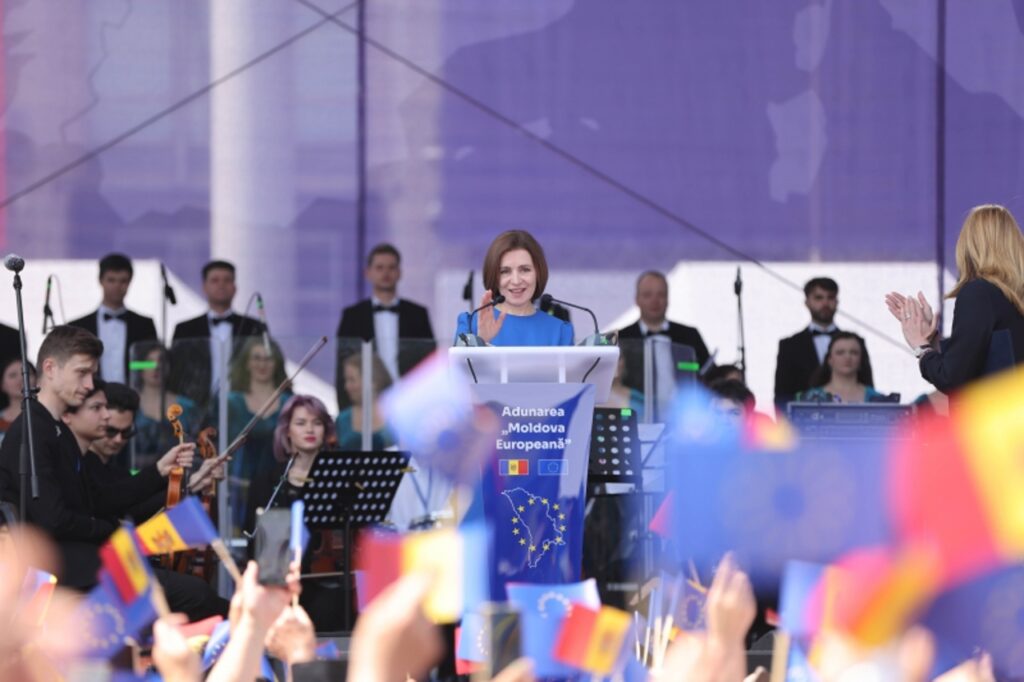
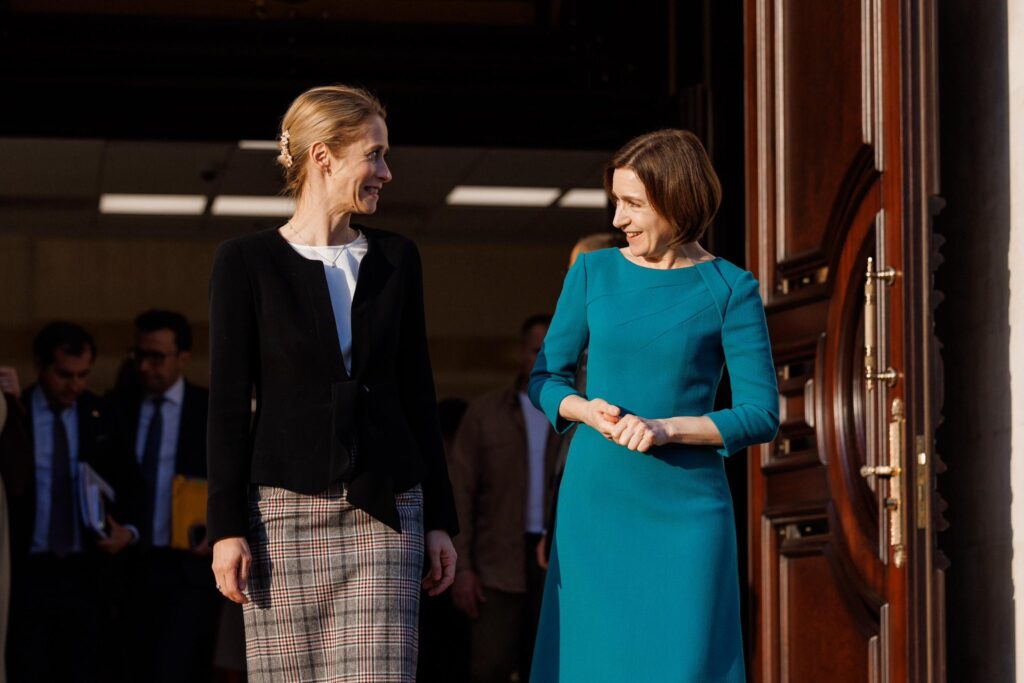
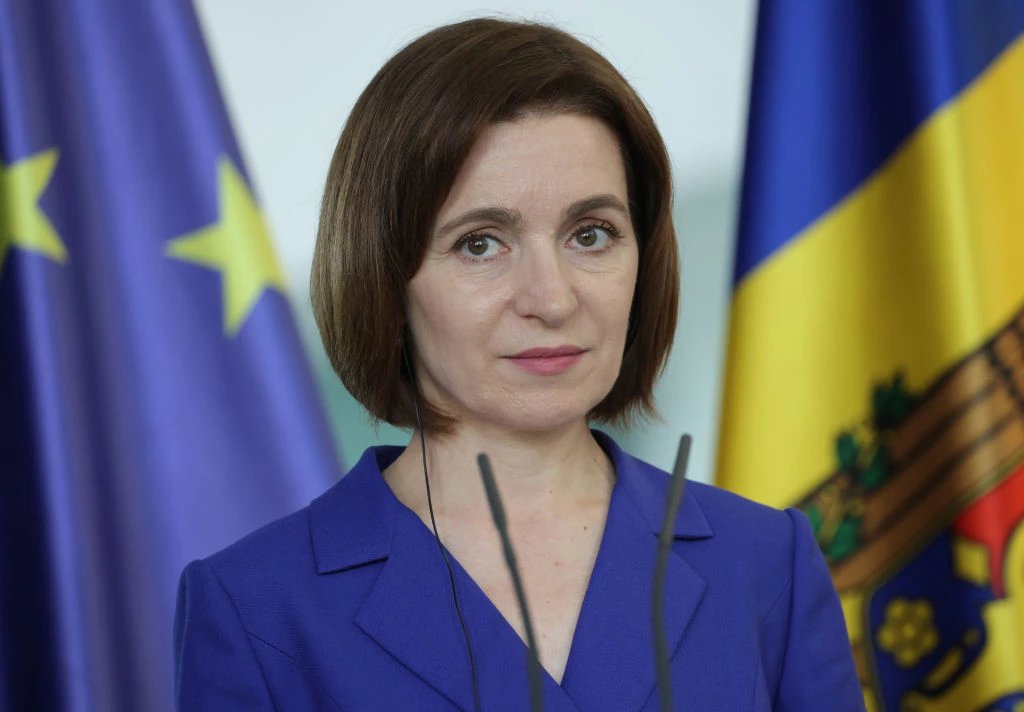
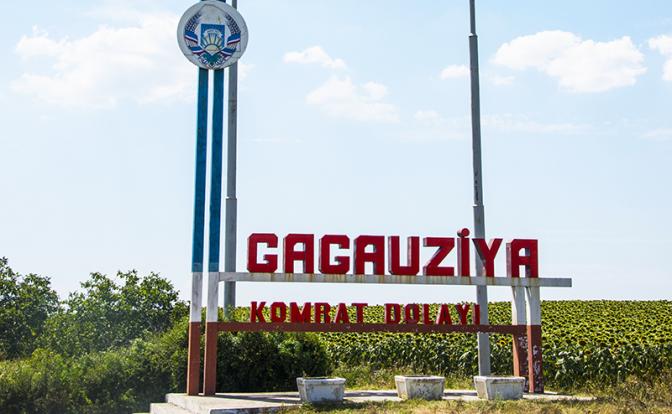
More on this story: Moldova threatened by outside-staged conflict in Gagauzia
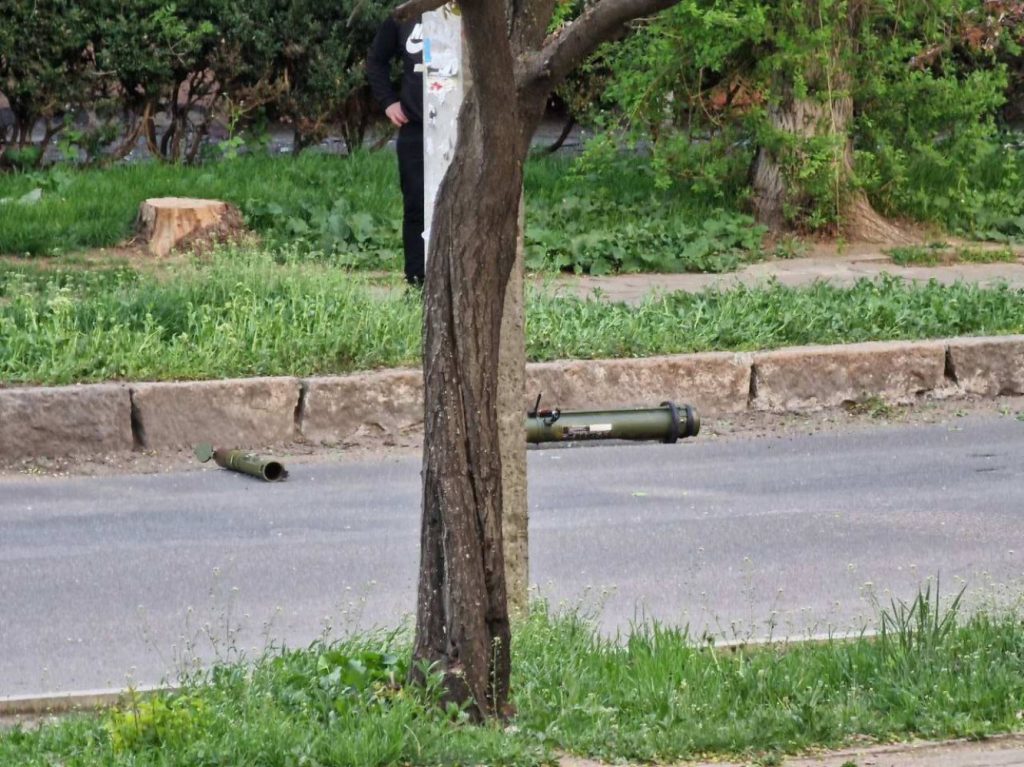
More on this story: Moldova leaders risk losing posts over protests inspired from outside
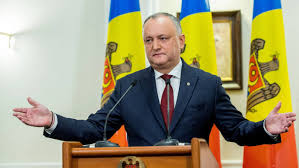
More on this story: Moldovan elections as a battlefield of GRU/FSB interests
